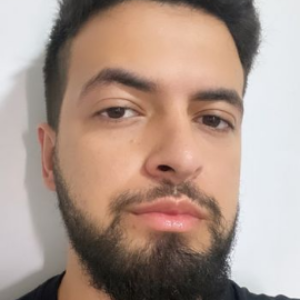Title : Effect of transcutaneous auricular vagus nerve stimulation on inflammation, cardiac autonomic modulation and health status of individuals with covid-19: a randomized, blind, and controlled trial
Abstract:
INTRODUCTION: COVID-19 has different clinical symptoms, with excessive inflammation and cardiovascular changes being common in severe cases. The use of transcutaneous atrial vagus nerve stimulation (taVNS) seems to be a viable treatment for these alterations.
OBJECTIVE: To evaluate the effects of transcranial auricular vagus nerve stimulation (taVNS) on inflammation, cardiac autonomic modulation, and clinical evolution of individuals affected with COVID-19.
METHOD: Clinical, controlled, blinded, randomized trial, in which 52 adult subjects, hospitalized with COVID-19, were randomized to receive active taVNS (a-taVNS) or sham taVNS (s-taVNS). The a-taVNS was applied for 90 minutes, twice a day, for 7 days, totaling 14 sessions, for the s-taVNS, the device remained off. Pre- and post-intervention inflammatory mediators were evaluated: interleukin-6 (IL-6), interleukin-10 (IL-10), C-reactive protein (CRP), and cortisol and heart rate variability (HRV). Clinical evolution, which included clinical signs of the disease and levels of anxiety and depression, was evaluated pre-and post-intervention and at 7 and 14-day follow-up. Attention and memory levels were also monitored after 7 and 14 days and monthly for 6 months, after the end of the interventions.
RESULTS: There was a significant reduction in CRP (p=0.038) and IL-6 (p<0.001) for the experimental group. There were no changes in IL-10 and cortisol levels and in HRV results (p>0.05) in both groups. In the clinical evolution, there were no changes in the variables in the evaluated periods, except for a significant decrease in the level of depression (p=0.031) in the a-taVNS group.
CONCLUSION: taVNS showed effects on inflammatory mediators CRP and IL-6 and on depression levels, however, it had no effects on cardiac autonomic modulation and other clinical symptoms.
Key-words: COVID-19, Vagus Nerve Stimulation, inflammation, autonomic modulation, clinical course, heart rate variability.
What will audience learn from your presentation?
- Symptoms of COVID-19 are highly variable and can affect the respiratory, cardiac, neurological and other systems, resulting from a hyperinflammatory state known as a cytokine storm.
- The vagus nerve participates in the regulation of important homeostatic functions and studies have confirmed its participation in the modulation of inflammation; the understanding of this pathway reveals an important therapeutic role of vagus nerve manipulations.
- Vagus nerve stimulation has been investigated as a promising therapy for inflammatory processes, including COVID-19 and cardiovascular disorders.
- There is evidence that vagus nerve stimulation can decrease sympathetic activity and is associated with the release of norepinephrine, improving autonomic control.




